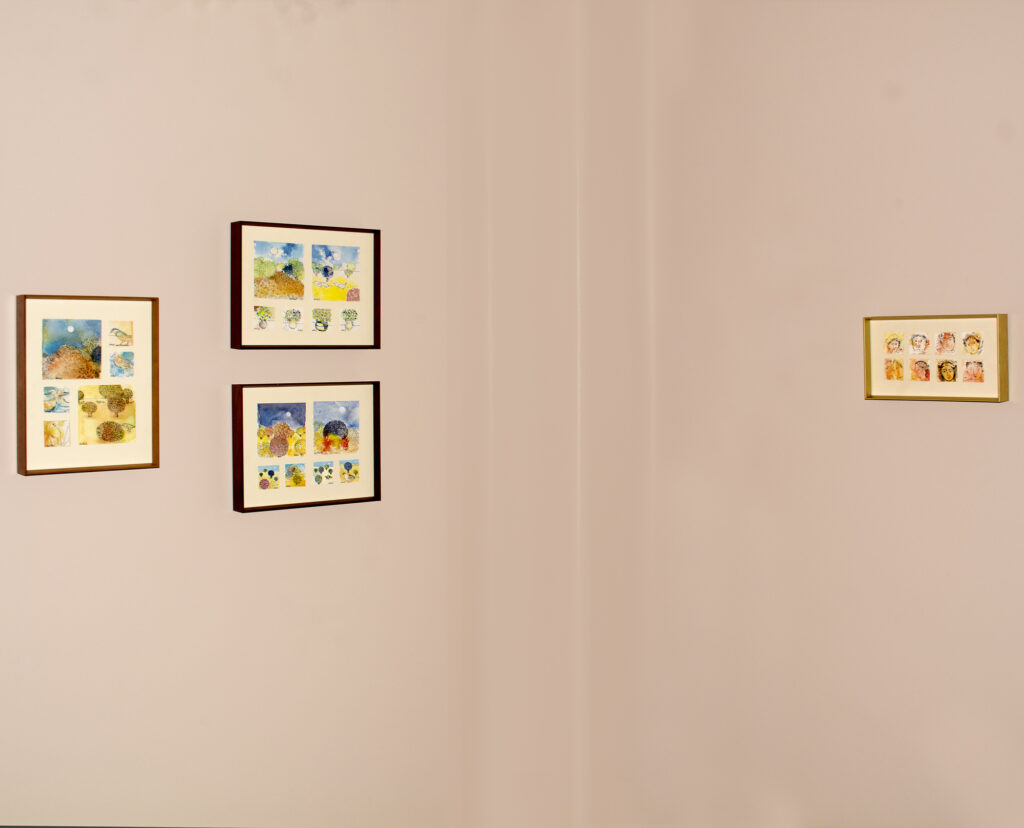CURRENT EXHIBITION
In a Grain of Sand | Maïté Delteil & Sakti Burman | 05th November – 31st December 2025.

For the 2025 edition of Art Mumbai, Art Musings will be showcasing works especially created for the Fair, by artists with whom the gallery shares a long relationship. Each artist has blazed their own path of experimentation, exploration and discovery, and the works on display will address concepts that have animated their practice. The booth will feature Indian masters SH Raza, Sakti Burman, Anjolie Ela Menon and Satish Gujral; French artist Maïté Delteil; as well as contemporary artists Nalini Malani, T Vaikuntam, Jayasri Burman, Baiju Parthan, Maya Burman, Nilofer Suleman, Gopikrishna, and Shilo Shiv Suleman.
SH Raza works on display include a black Bindu Nad painting, a concept that has been a focal point in the artist’s journey; along with a trio of drawings. Sakti Burman’s painting ‘The Divine Child’, creates a world of fantasy, fable and poetic harmony. Flanked by earlier works of his early marble series, one can see the storytelling narrative that has been constant through the years. An early work by Satish Gujral is a display as well as Anjolie Ela Menon’s portraits in her signature style. Maïté Delteil’s exquisite rendition of landscape, ‘Happy Summer’ celebrates life and nature, offset by smaller works of the same theme. One sees the influence of the rich cultural heritage in Jayasri Burman’s work. Her painting ‘Pranan’ has an altar-like quality, and depicts The Sacred Feminine. Fables creep into the narrative, full of myth and magic. A large Nalini Malani panel holds the viewer enthralled with her reverse acrylic work. Baiju Parthan’s canvas ‘The Last Battle of Sigmund Freud’ delves into a tumultuous fusion of metaphysics and psychology, portraying the release of libidinal energies clashing against the vast expanse of the Jungian collective unconscious. Vaikuntam presents a diptych panel in his trademark signature style. Maya Burman showcases various shapes, featuring a slender panel, along with 2 rondos. The paintings are peopled by pneumatic figures, depicted in moments of play and festivity, inspired by her garden in the south of France. Nilofer Suleman’s attention to detail is present in the two portraits in the diptych ‘Gulshan e Iran, where ornate jewellery and intricately patterned outfits adorn her central characters. Items such as spiced boxes, paandaans and flowers complete the composition. Shilo Shiv Suleman fills an entire wall with her recent work ‘Incarnation’, featuring three paintings set inside contemporary brass prabhavallis. The concept looks at the act of a spirit choosing a body, giving thought to the idea of how our spirits somehow find our bodies.